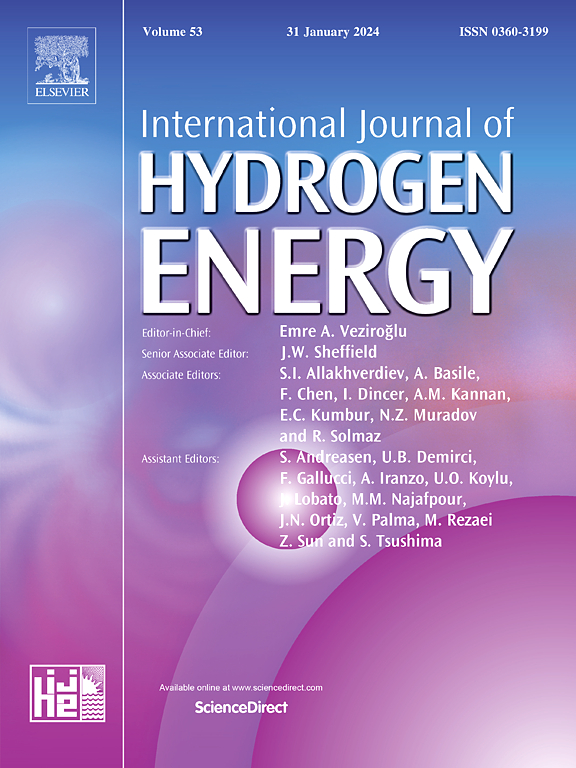Promoting directional reconstruction of double perovskites for efficient water splitting
IF 8.1
2区 工程技术
Q1 CHEMISTRY, PHYSICAL
引用次数: 0
Abstract
Double perovskite oxides are promising electrocatalysts for water electrolysis due to their tunable structure and ordered ion arrangement. However, while in-situ surface reconstruction of perovskites enhances oxygen evolution reaction (OER) activity, this process is inherently uncontrollable, as structural instability drives irreversible phase transitions and active metal dissolution, ultimately degrading both activity and stability. Herein, we developed an Fe3+-induced directional reconstruction strategy that transforms double perovskite Sr2NiMoO6 into a heterostructure consisting of crystalline SrMoO4 and amorphous NiFeOxHy. In-situ analyses reveal that this structural reconstruction simultaneously optimizes OH− adsorption at NiFe dual-active sites and activates more lattice oxygen contributions to the reaction. Moreover, dynamically dissolved Mo species during the OER serve as electronic modulators to facilitate rapid reconfiguration of Ni ions while suppressing detrimental over-oxidation and dissolution. This strategy can be extended to optimize other double/triple perovskite oxides, where directional reconstruction and enhanced OER activity/stability are obtained.

促进双钙钛矿的定向重构以实现高效的水分解
双钙钛矿氧化物具有结构可调和离子排列有序的特点,是一种很有前途的水电解电催化剂。然而,尽管钙钛矿的原位表面重建增强了析氧反应(OER)活性,但这一过程本质上是不可控的,因为结构的不稳定性导致了不可逆的相变和活跃的金属溶解,最终降低了活性和稳定性。在此,我们开发了一种Fe3+诱导的定向重建策略,将双钙钛矿Sr2NiMoO6转变为由晶体SrMoO4和非晶NiFeOxHy组成的异质结构。原位分析表明,这种结构重构同时优化了NiFe双活性位点的OH -吸附,并激活了更多的晶格氧对反应的贡献。此外,在OER过程中,动态溶解的Mo物质作为电子调节剂,促进Ni离子的快速重构,同时抑制有害的过氧化和溶解。该策略可以扩展到优化其他双/三重钙钛矿氧化物,从而获得定向重构和增强的OER活性/稳定性。
本文章由计算机程序翻译,如有差异,请以英文原文为准。
求助全文
约1分钟内获得全文
求助全文
来源期刊

International Journal of Hydrogen Energy
工程技术-环境科学
CiteScore
13.50
自引率
25.00%
发文量
3502
审稿时长
60 days
期刊介绍:
The objective of the International Journal of Hydrogen Energy is to facilitate the exchange of new ideas, technological advancements, and research findings in the field of Hydrogen Energy among scientists and engineers worldwide. This journal showcases original research, both analytical and experimental, covering various aspects of Hydrogen Energy. These include production, storage, transmission, utilization, enabling technologies, environmental impact, economic considerations, and global perspectives on hydrogen and its carriers such as NH3, CH4, alcohols, etc.
The utilization aspect encompasses various methods such as thermochemical (combustion), photochemical, electrochemical (fuel cells), and nuclear conversion of hydrogen, hydrogen isotopes, and hydrogen carriers into thermal, mechanical, and electrical energies. The applications of these energies can be found in transportation (including aerospace), industrial, commercial, and residential sectors.
 求助内容:
求助内容: 应助结果提醒方式:
应助结果提醒方式:


